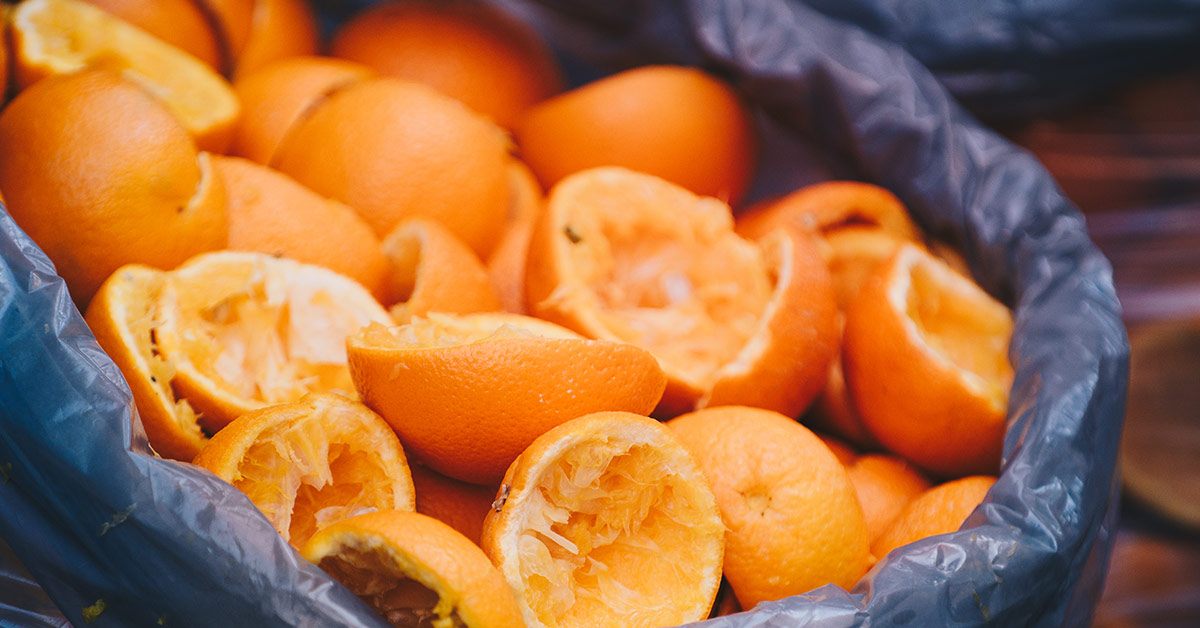There is no doubt about it: Our planet has a plastic problem. Eco-companies, engineers, scientists, and entrepreneurs are scrambling to find sustainable solutions to make plastic a product of the past. One of the latest of these is a young Mexican entrepreneur who has created a plastic alternative made out of orange waste. (1)
Student Made Plastic Alternative Out Of Orange Waste
Mexico is the fifth-largest producer of oranges in the world. The average annual orange production in the company is about 45 million tons. Unfortunately, about 40 to 65 percent of that production is discarded as waste. Giselle Mendoza, a student of Mexico’s Monterrey Institute of Technology, saw this leftover product as an opportunity to solve the world’s plastic problem.
“I was shocked to learn that the world generates 200 million tons of plastic waste every year that takes more than 1,000 years to decompose. The Great Pacific Garbage Patch, an accumulation of plastic waste in the ocean, is the size of France!” she said. “When I went to university to study economics, I also joined the entrepreneurial ecosystem of the Monterrey Institute of Technology and founded GECO–named for our vision of becoming a Group of Ecological Companies–with the dual intentions of eradicating plastic pollution and improving socio-economic conditions in Mexico.”
GECO: Group of Ecological Companies
GECO is her enterprise that is now turning the leftover products from orange production into a sustainable alternative to plastic. These leftovers include orange peels and the pulp leftover from juicing.
“Forecasts indicate that by 2050 there will be more plastic waste than fish in the sea, and plastic production worldwide will reach 33 billion tons,” she said. “GECO will counter this toxic plastic juggernaut by offering a 100% biodegradable alternative to plastic. Our bioplastic is an ecological and versatile material that replaces pollutant plastics derived from oil. It reduces decomposition time from 1,000 years to only 90 days when exposed to organic matter, offers competitive pricing, and will eventually disrupt the pollutant plastic industry that generates 200 million tons of plastic waste each year, which is killing one million birds and 100,000 marine animals annually.”
Read: Woman Finds Way To Recycle Plastic Into Bricks That Are Stronger Than Concrete
Humanitarian and Sustainable
Mendoza explains that her motivation to build GECO didn’t just come from the world’s plastic problem. She also wants to improve her community. Growing up, Mendoza witnessed the many challenges facing indigenous peoples, single mothers, low-income families, the elderly, and children with cancer in her community. GECO is empowering her to help these communities and create solutions for both social and environmental problems in her country.
“I saw an opportunity to replace plastic with a more environmentally friendly solution while simultaneously closing the economic inequality gap in Mexico,” she explained. “I chose to make bioplastic from oranges because they are an important fruit worldwide due to production volume, per capita consumption, and their curative and nutritive properties. They’re also an important source of employment and foreign exchange in countries that produce and export them.”
Read: 8-Year-Old Girl Invents Solar-Powered Water Heater and Wins Nuclear Sciences Prize
Why Oranges?
Besides the fact that Mexico produces such a high volume of oranges, Mendoza also explains overproduction has caused orange prices to drop. She saw how the country was wasting such a huge portion of the orange crop. Not only was it going to waste economically, but also the rotting fruit was affecting the health of the surrounding communities. This is where she saw the opportunity. GECO’s orange waste applications include:
- Biomedicine: A skin substitute for burn and wound treatments, bone tissue replacement, blood vessel substitutes, and more.
- Packaging: As a replacement for packing peanuts, plastic packaging, and more.
- Agriculture: As bioplastic nanoparticles that lengthen the duration of fertilizers and pesticides without harming the plants or soil.
Mendoza and GECO are also working on a “Nata de Coco”, which will be a low-cost food with high nutritional value to solve the problem of malnutrition in poorer communities.
The Future of GECO
Despite still being in school, Mendoza has a big, long-term vision for GECO and what it can do to improve the planet. She is excited to see what kind of impact she can have not just on her community, but on communities all over Latin America.
“The mission of GECO is to be a catalyst for tech-based entrepreneurship with high social and environmental impact. We are developing technology that will close the economic inequality gap in Latin America and provide solutions in multiple sectors, including environmental, health, industry, food and labor,” she explained. “In addition, GECO is focusing research efforts on developing plastic alternatives with in-demand properties including transparency, flexibility, resistance, biodegradability in natural conditions and high thermal capacity, so that our bioplastic will pass the mechanical tests necessary to convince industries to change their raw materials to a more environmentally friendly alternative.”
Follow along with GECO’s initiatives on their Instagram.
Keep Reading: ‘Sea Of Plastic’ Discovered In The Caribbean Stretches 5 Miles And Is Choking Wildlife
Sources
- “How One EO GSEA Global Finalist Plans to End Plastic Pollution.” Inc

